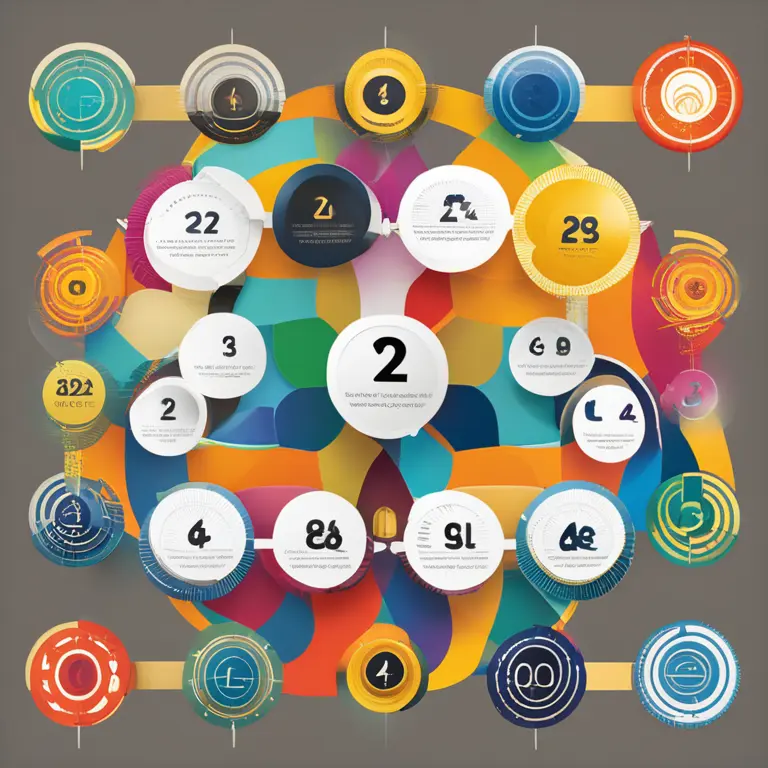
The Rhythms Within: Biorhythms Explored
Delve into the science of biorhythms to discover the innate cycles that influence our physical, emotional, and intellectual capabilities.
article by Adrian Wallace
The Concept of Biorhythms
Biorhythms are a complex dance of biological cycles believed to affect our physical, emotional, and intellectual well-being. The idea, originating in the 19th century and gaining popularity in the 1970s, posits that from the moment of birth, human life is influenced by rhythmic biological cycles. Researchers have proposed that understanding these patterns could lead to enhanced well-being and performance. While science often regards biorhythms with skepticism, many find the concept intriguing enough to explore its potential impact on their daily lives as we head into 2024 and beyond.

Physical Cycle: The 23-Day Rhythm
Our physical capabilities are said to oscillate in a 23-day cycle, influencing our strength, coordination, and overall vitality. Proponents of biorhythms believe that when this physical cycle is at its peak, we are more likely to feel energetic and healthy. Conversely, during the low phase of the cycle, our physical resilience may wane, making us feel tired or under the weather. Critics argue that fluctuations in physical well-being can result from various factors unrelated to biorhythms, yet some individuals track these cycles to optimize their physical activities and health regimens.

Emotional Cycle: The 28-Day Rhythm
Emotions are central to our human experience, and the biorhythm theory suggests a 28-day cycle affects our mood, creativity, and perception. During the high phases, individuals might experience increased positivity, stability, and harmonious emotions. The low swing of this cycle can sometimes correspond with a person feeling more stress or emotional instability. While scientific evidence remains inconclusive, the concept invites individuals to consider the timing of significant emotional decisions or events.

Intellectual Cycle: The 33-Day Journey
The intellectual cycle, extending over 33 days, is thought to affect cognitive functions such as analysis, decision-making, and memory. Biorhythm enthusiasts assert that high points in this cycle may bring about sharp mental clarity and enhanced problem-solving abilities. On the downside, one might experience a foggy brain or difficulty concentrating. Although direct scientific support for the intellectual cycle's effects is limited, some people use it as a planning tool for intellectually demanding tasks.

Integrating Biorhythms into Daily Life
Whether or not one subscribes to the validity of biorhythms, the act of pausing to reflect on personal energies and abilities can be beneficial. In an era overflowing with wellness trends and self-care practices, monitoring biorhythms can offer another layer of self-awareness. Some individuals find it helpful to track these cycles using apps or online calculators that plot the highs and lows of their personal biorhythm charts. While the scientific community continues to debate the tangible effects, incorporating biorhythm tracking as a mindfulness practice remains a personal choice.
Looking Ahead: Biorhythms in 2024
As we progress further into the 2020s, the fascination with personal wellness and optimization is likely to keep biorhythms in the conversation. The growing interest in personalized health data and self-quantification suggests that the allure of biorhythms will persist, despite the skepticism of many in the scientific field. Whether through technology or philosophy, the timeless quest for understanding and improving ourselves keeps the dialogue around biorhythms relevant.
Published: 1/25/2024
Modified: 1/25/2024
More predictions
Come back here soon to learn more about yourself and your future


The Basis of Biorhythms: An Insight into Biological Cycles
Delve into the concept of biorhythms, the belief in rhythmic biological processes that purportedly influence human physiology and behavior.


The Principles of Biorhythm Cycles
Discover the fundamental principles of biorhythm cycles and how they influence daily life and personal well-being in this insightful article.


The Human Biorhythm Cycle: Patterns of Life's Ebb & Flow
Delve into the human biorhythm cycle, a compelling concept in the holistic understanding of our physiological and emotional patterns over time.